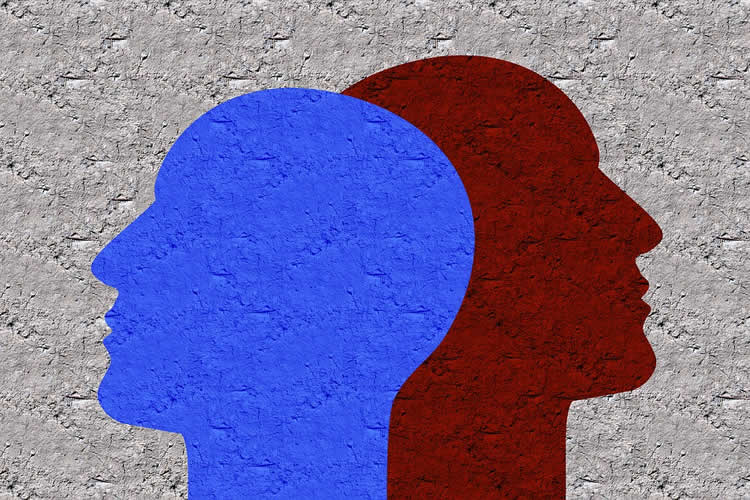Summary: A new study reveals how we manage our long term happiness.
Source: Boston Children’s Hospital.
New data science research shows how we manage our long-term happiness.
Most theories of motivation have championed the pleasure principle, where our choices of daily activities aim to minimize the negative effects and maximize the positive effects. However, it is currently not clear to researchers how to reconcile this idea with the fact that we all have to engage routinely in unpleasant, yet necessary activities.
To address this question, a team of researchers, led by Maxime Taquet, a research fellow at the Boston Children’s Hospital, developed a smartphone application to monitor in real-time the activities and moods of over 28,000 people.
The team found that, rather than following the pleasure or hedonic principle, people’s choices of activities instead consistently followed a hedonic flexibility principle. Specifically, the model shows that people were more likely to engage in mood-increasing activities such as playing sport when they felt bad, and engage in useful, but mood-decreasing activities such as doing housework when they felt good.
These findings from large-scale data clarify how hedonic considerations shape human behavior. They may also explain how humans overcome the allure of short-term gains in happiness to maximize their long-term welfare.
Dr. Taquet said: “The decisions we make every day about how to invest our time have important personal and societal consequences. Most theories of motivation propose that our daily choices of activities aim to maximize our positive state of mind, but have so far failed to explain when people decide to engage in unpleasant yet necessary activities. Using large-scale data, we showed how our emotions shape our behavior and explain the trade-offs us humans make in our daily lives to secure our long-term happiness.”
Using the smartphone app meant the researchers could gather huge amounts of data. This approach may have given them a much more realistic idea of the choices people are routinely making in the real-world in their day-to-day lives.
As part of the study, participants were presented with questionnaires via the app at random times throughout the day. They were asked to rate their current mood on a scale of 0 (very unhappy) to 100 (very happy) and to report what they were doing from a standard list of choices.
The model revealed that firstly, people’s future decisions to engage in one activity rather than another are related to how they currently feel. Secondly, the interplay between mood and choices of activity followed a very specific pattern.

When participants were in a bad mood, they were more likely to later engage in activities that tended to subsequently boost their mood. For example, if people’s current mood decreased by 10 points, they were more likely to later engage in things like sport, going out into nature, and chatting. All of these activities were associated with a subsequent increase in mood. By contrast, if people’s current mood was rather high, they were more likely to later engage in unpleasant (but necessary) activities, such as housework, commuting or working.
Dr. Taquet added: “Deciding what to do with one’s time is one of the most fundamental choices humans face every day – a choice that has crucial consequences both for individuals and society at large. Our findings demonstrate that people’s everyday decisions regarding which activities to undertake are directly linked to how they feel and follow a remarkably consistent pattern. People seek mood enhancing activities when they feel bad and engage in unpleasant activities that might promise longer-term payoff when they feel good.”
The research, published this week in the journal Proceedings of the National Academy of Sciences, was carried out in collaboration with researchers from the Massachusetts Institute of Technology (MIT), the Imperial College in London and Stanford University.
Source: Bethany Tripp – Boston Children’s Hospital
Image Source: This NeuroscienceNews.com image is in the public domain.
Original Research: Abstract for “Hedonism and the choice of everyday activities” by Maxime Taquet, Jordi Quoidbach, Yves-Alexandre de Montjoye, Martin Desseilles, and James J. Gross in PNAS. Published online August 15 2016 doi:10.1073/pnas.1519998113
[cbtabs][cbtab title=”MLA”]Boston Children’s Hospital. “Modeling Mood Swings.” NeuroscienceNews. NeuroscienceNews, 17 August 2016.
<https://neurosciencenews.com/mood-swings-neuroscience-4864/>.[/cbtab][cbtab title=”APA”]Boston Children’s Hospital. (2016, August 17). Modeling Mood Swings. NeuroscienceNews. Retrieved August 17, 2016 from https://neurosciencenews.com/mood-swings-neuroscience-4864/[/cbtab][cbtab title=”Chicago”]Boston Children’s Hospital. “Modeling Mood Swings.” https://neurosciencenews.com/mood-swings-neuroscience-4864/ (accessed August 17, 2016).[/cbtab][/cbtabs]
Abstract
Hedonism and the choice of everyday activities
Most theories of motivation have highlighted that human behavior is guided by the hedonic principle, according to which our choices of daily activities aim to minimize negative affect and maximize positive affect. However, it is not clear how to reconcile this idea with the fact that people routinely engage in unpleasant yet necessary activities. To address this issue, we monitored in real time the activities and moods of over 28,000 people across an average of 27 d using a multiplatform smartphone application. We found that people’s choices of activities followed a hedonic flexibility principle. Specifically, people were more likely to engage in mood-increasing activities (e.g., play sports) when they felt bad, and to engage in useful but mood-decreasing activities (e.g., housework) when they felt good. These findings clarify how hedonic considerations shape human behavior. They may explain how humans overcome the allure of short-term gains in happiness to maximize long-term welfare.
“Hedonism and the choice of everyday activities” by Maxime Taquet, Jordi Quoidbach, Yves-Alexandre de Montjoye, Martin Desseilles, and James J. Gross in PNAS. Published online August 15 2016 doi:10.1073/pnas.1519998113






